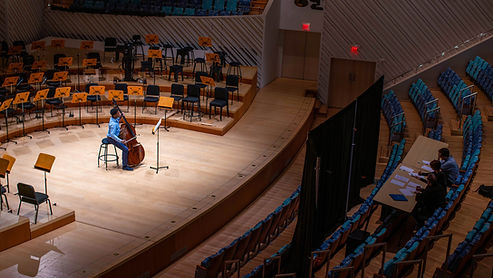By: Kyle Xu
American orchestras that have long lacked diversity have started to hire Asian and Latino players over the decade. However, they have barely started employing Black musicians.
People of color now make up 21 percent of orchestra players nationwide, up from 14 percent in the 2013 season, according to a study conducted by the League of American Orchestras. The study found that the share of Black musicians barely rose, from 1.8 percent to 2.4 percent.
“I have never felt so much urgency for change and seen so much sincere work for change,” said Simon Woods, the president and chief executive of the orchestra league. “But there’s no denying the fact that we, as a field, have to believe it can go faster.”
Although the music industry has long recognized that it has a problem with discrimination, progress has been slow. Women and people of color have long been scarce in American orchestras.
There are some disagreements over how to address the problem. Some musicians and activists have suggested that orchestras should try the blind-audition process, in which musicians try out behind screens to prevent racial bias.
A report, based on data from 156 orchestras, showed many signs of progress. The number of Asian and Asian American players has increased nationwide, making up 11 percent of musicians. The number of Latino musicians also rose, from 2.5 percent to 4.8 percent.
Ever since the protests over injustice in 2020, orchestras have promoted their efforts for diversity. They now have more work by women and people of color. They also have more staff members from underrepresented groups.
“There’s really not a shortage of talent,” said Afa Dworkin, the president and director of the Sphinx Organization. “There are ranks and ranks of Black and Hispanic musicians who certainly are ready to perform as part of major American orchestras. And we’re not engaging nearly enough of them yet.”
The conducting field grew diverse, including music directors and assistant conductors. People of color now make 32 percent of those positions, up from the 16 percent a decade earlier.
“Rather than waiting for the system to make room for us, we’re creating our own opportunities,” said Jeri Lynne Johnson, the founder of the Black Pearl Chamber Orchestra. “We’re building our own network. We’re making a path for each other.”











